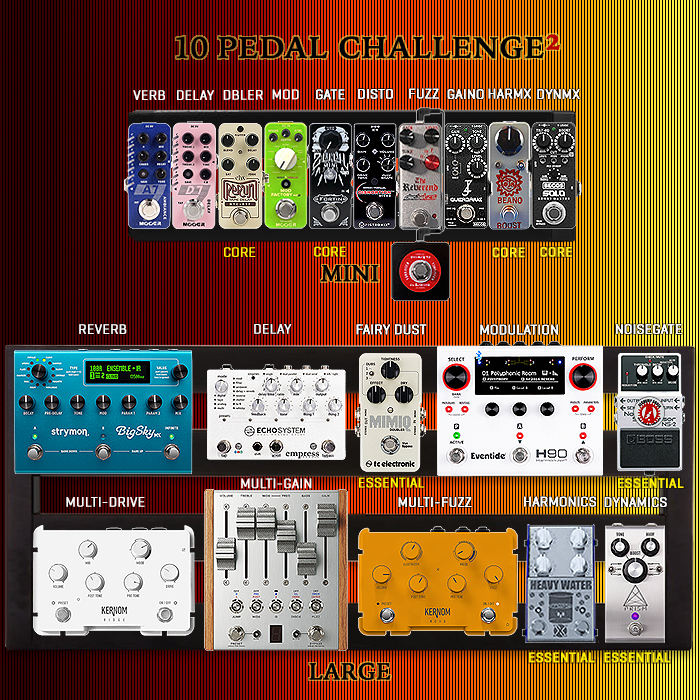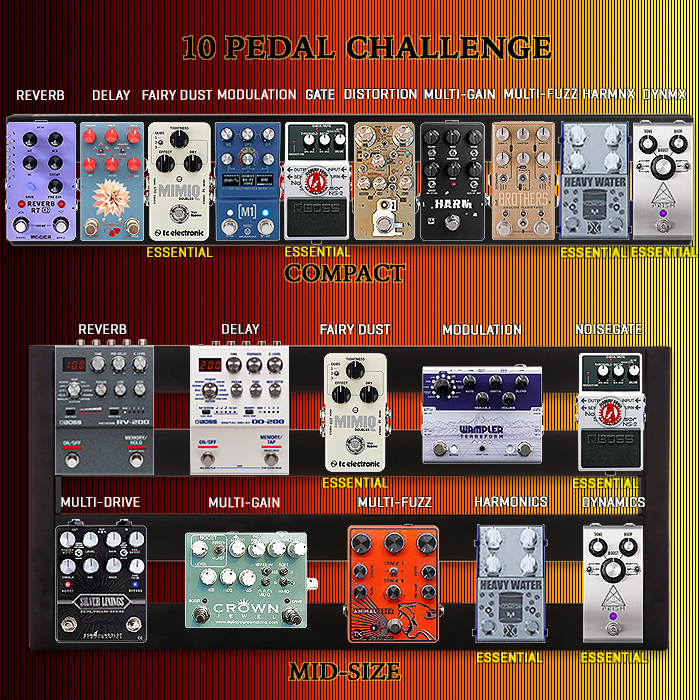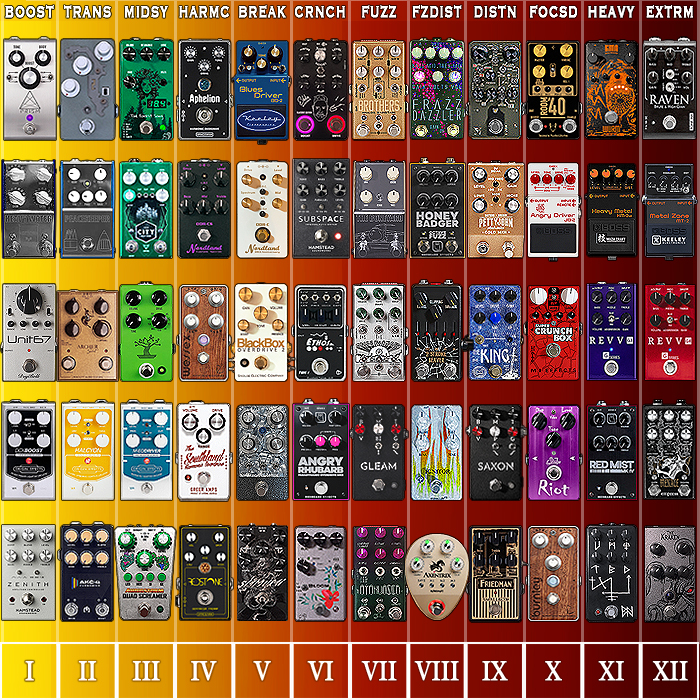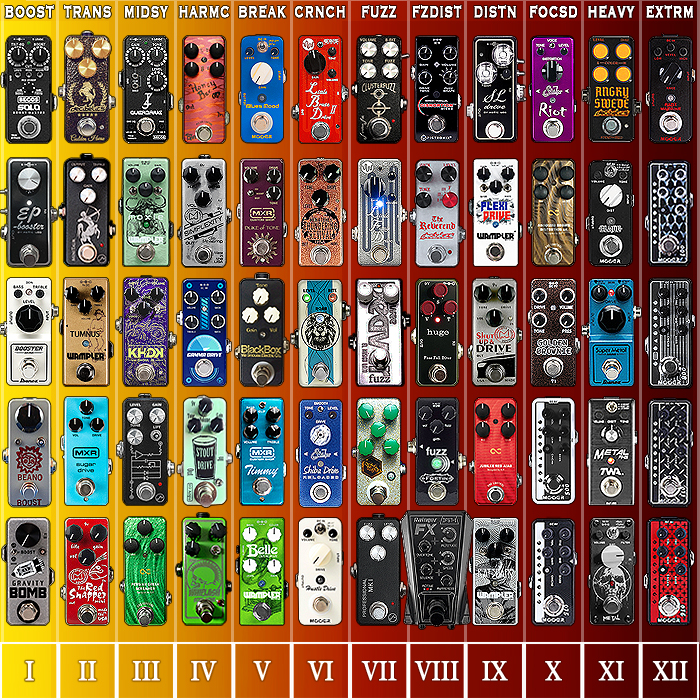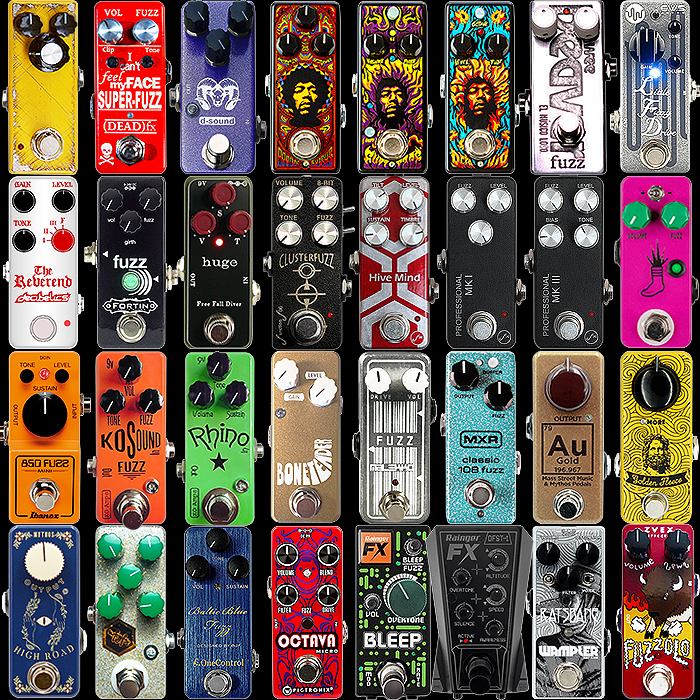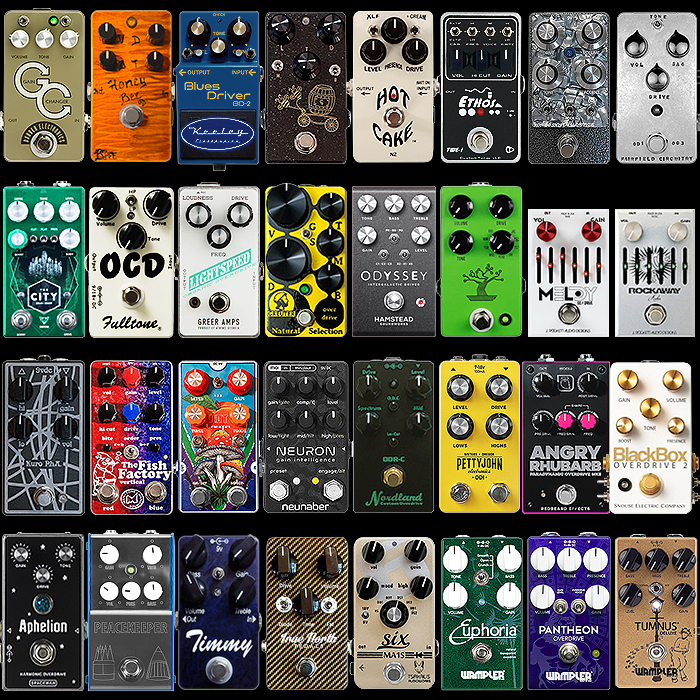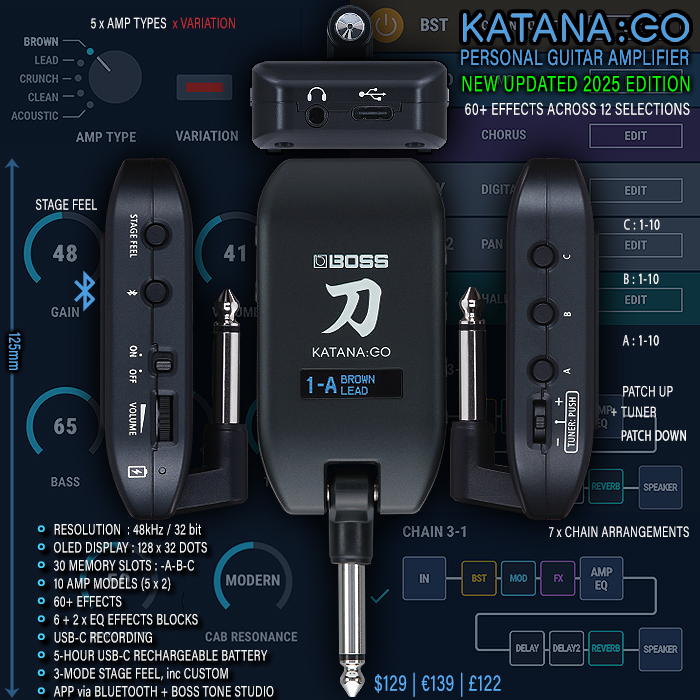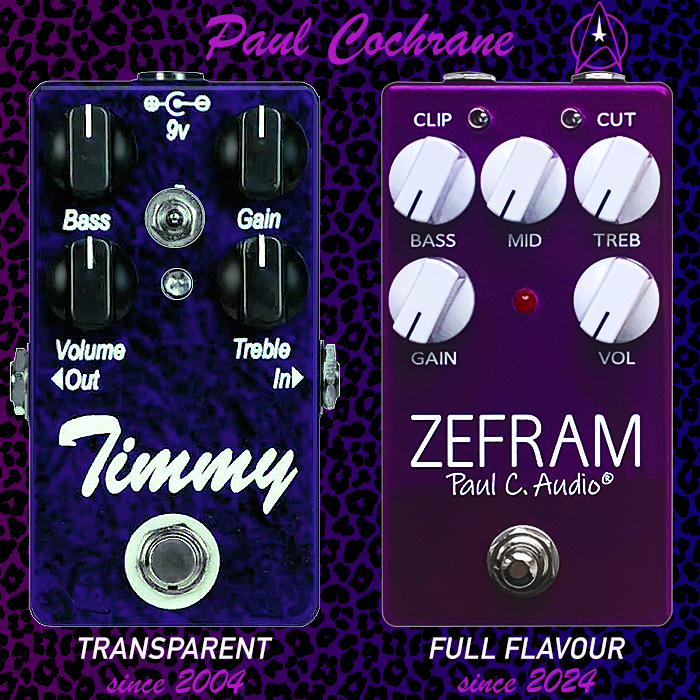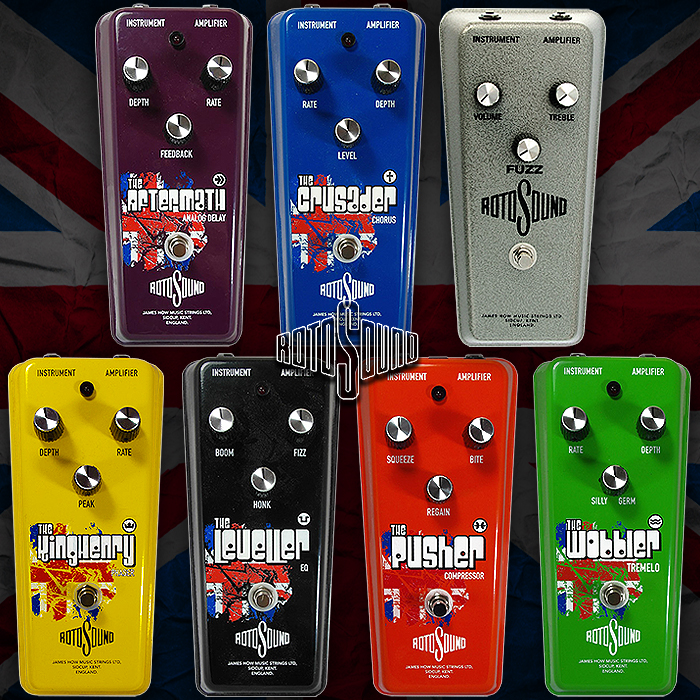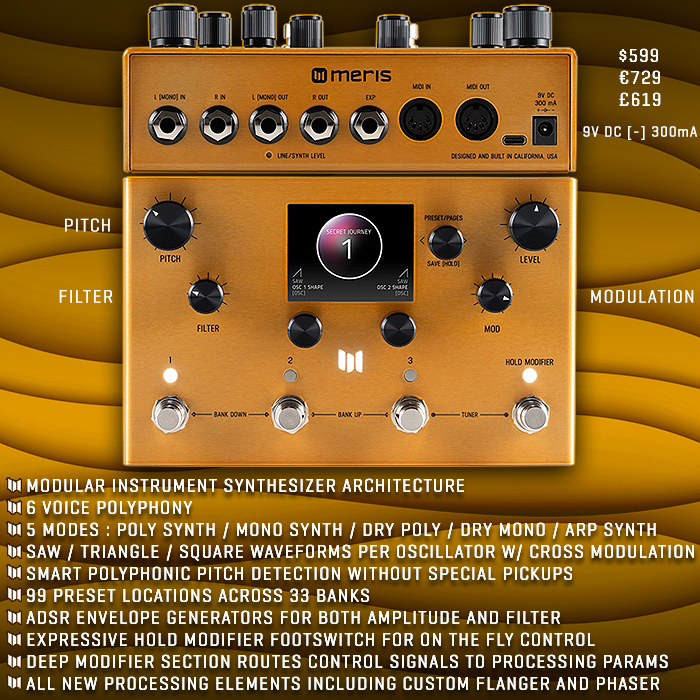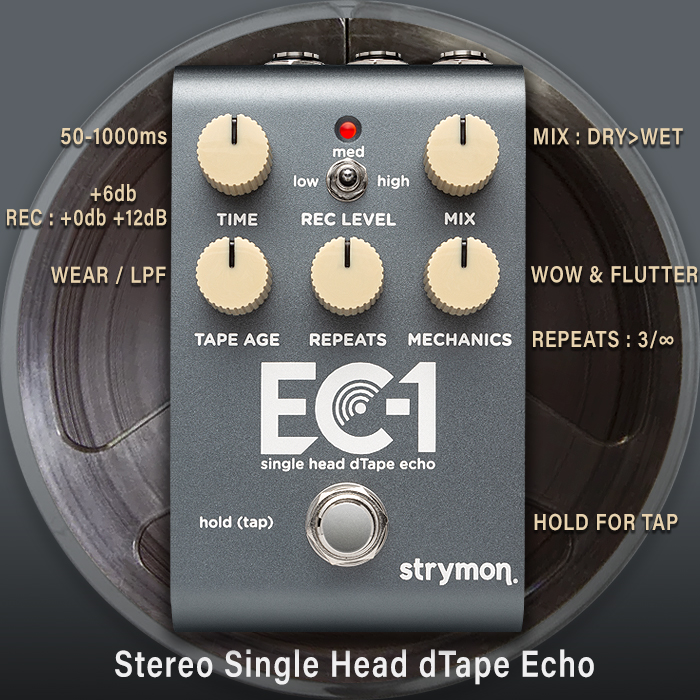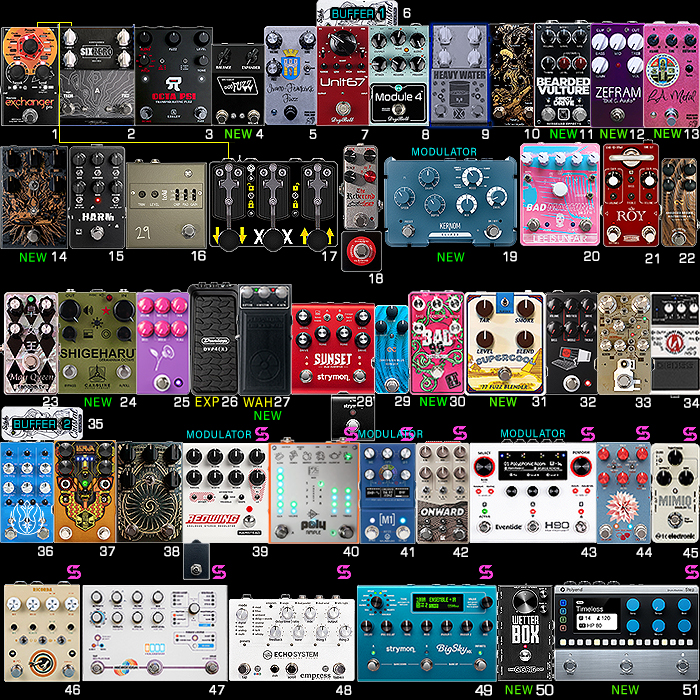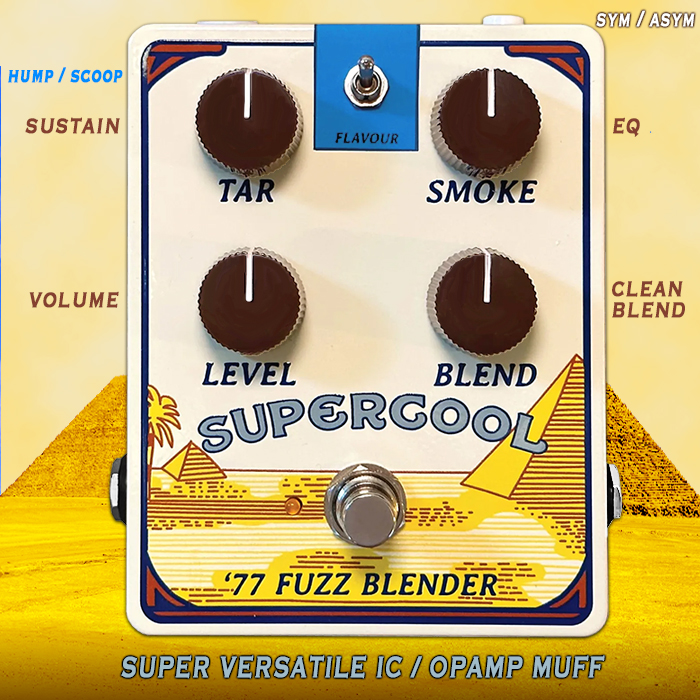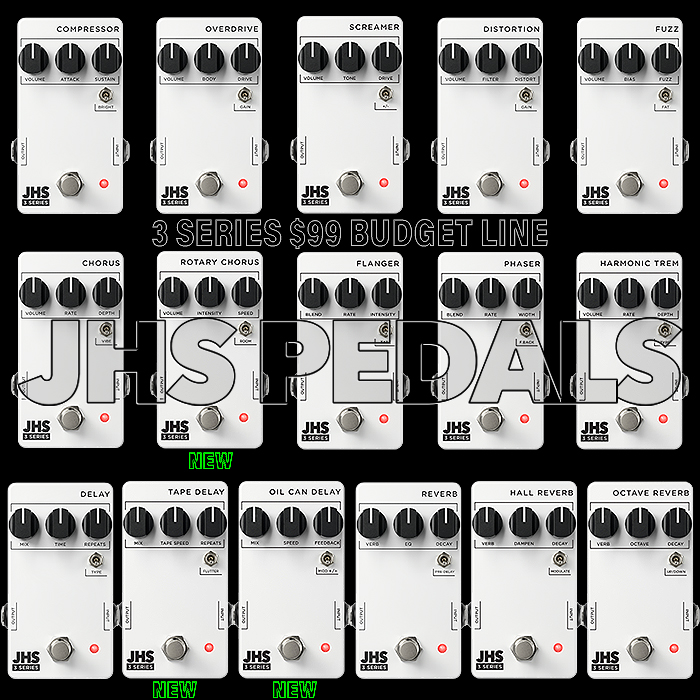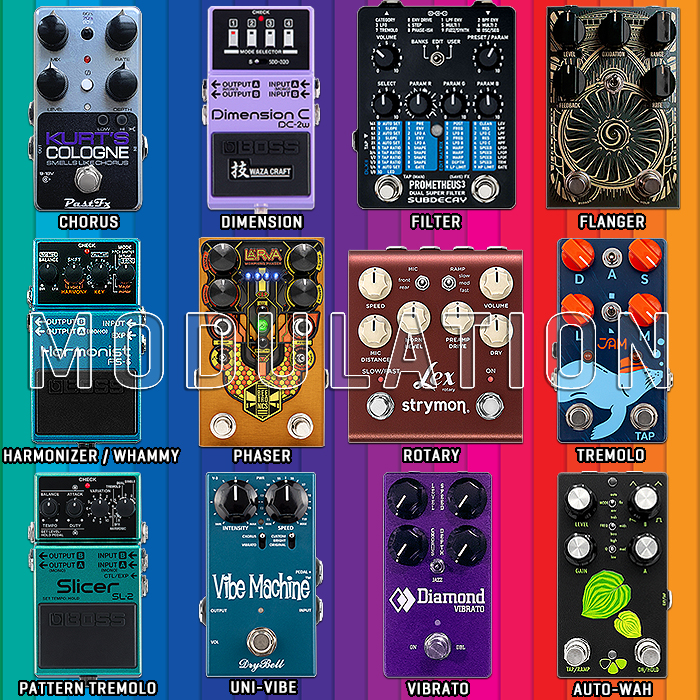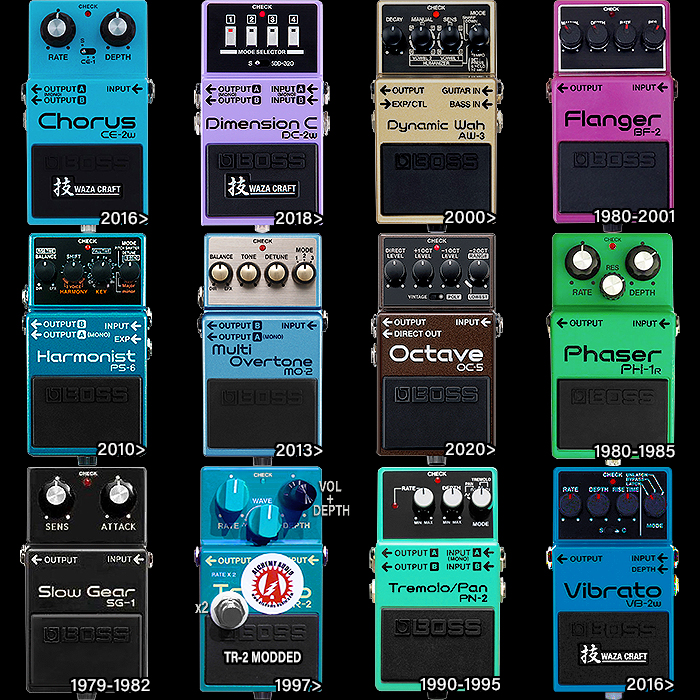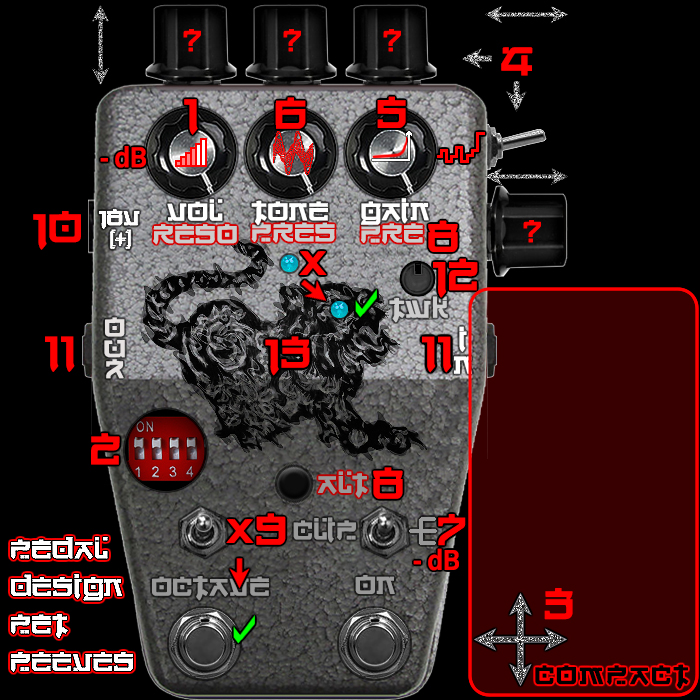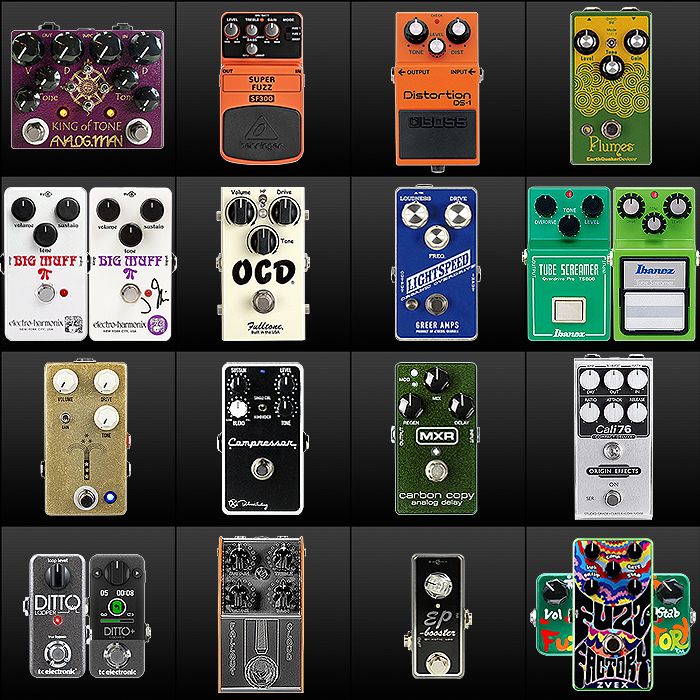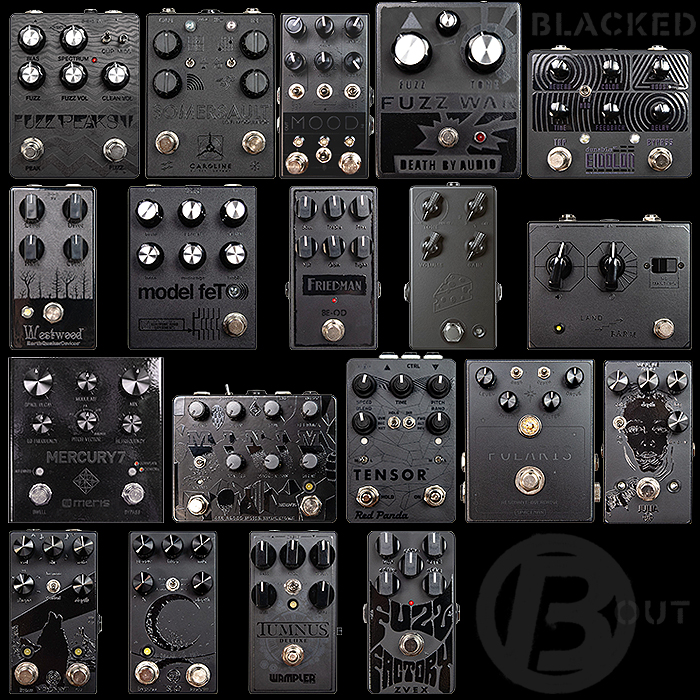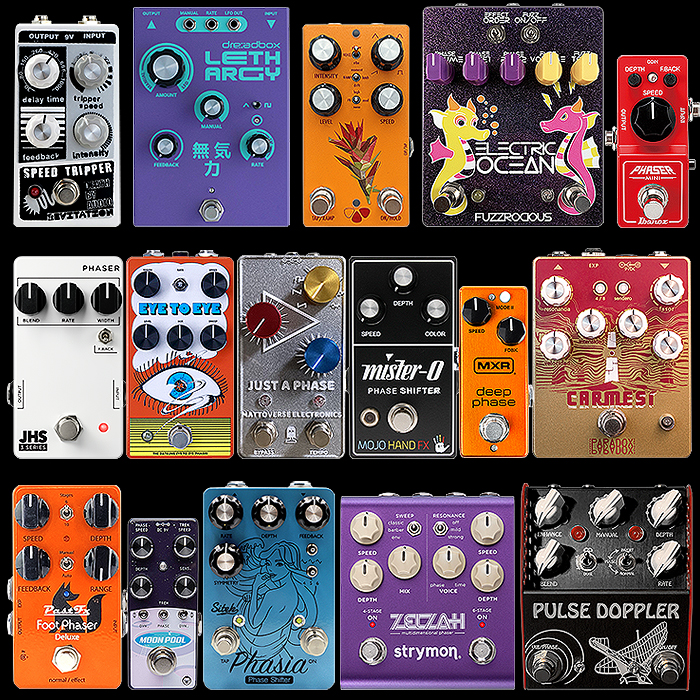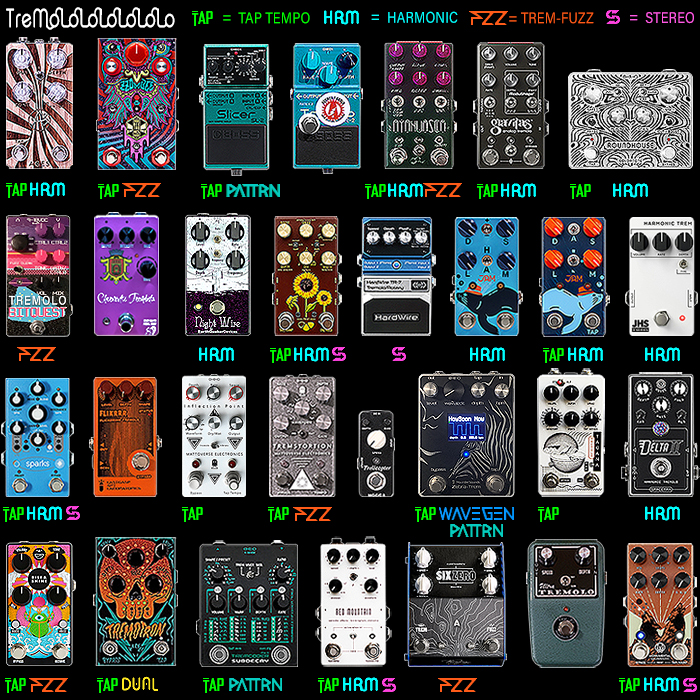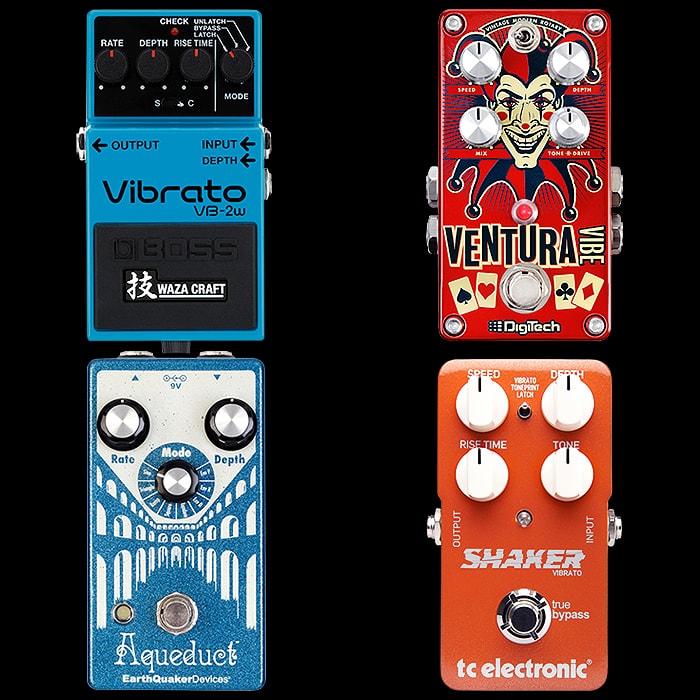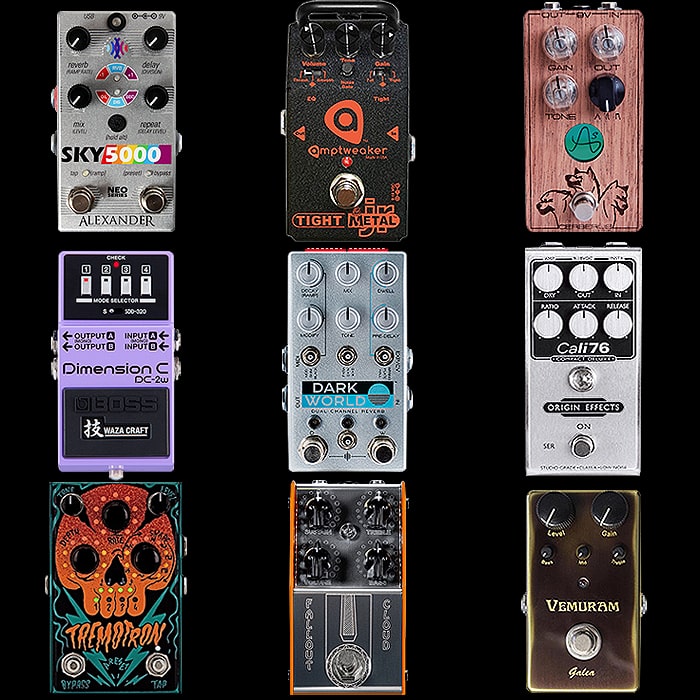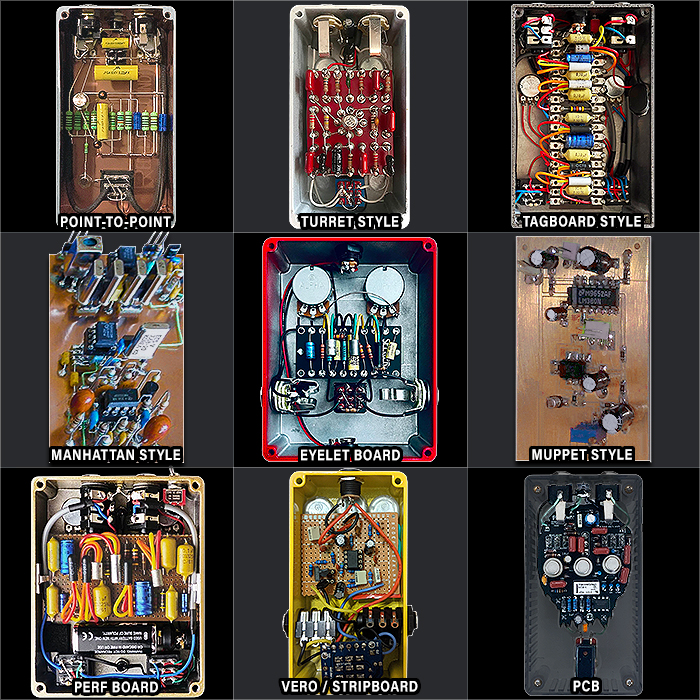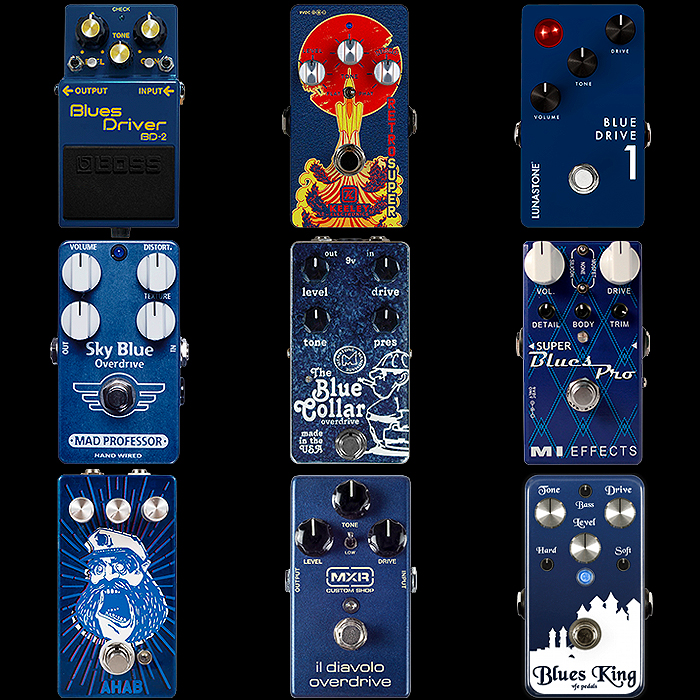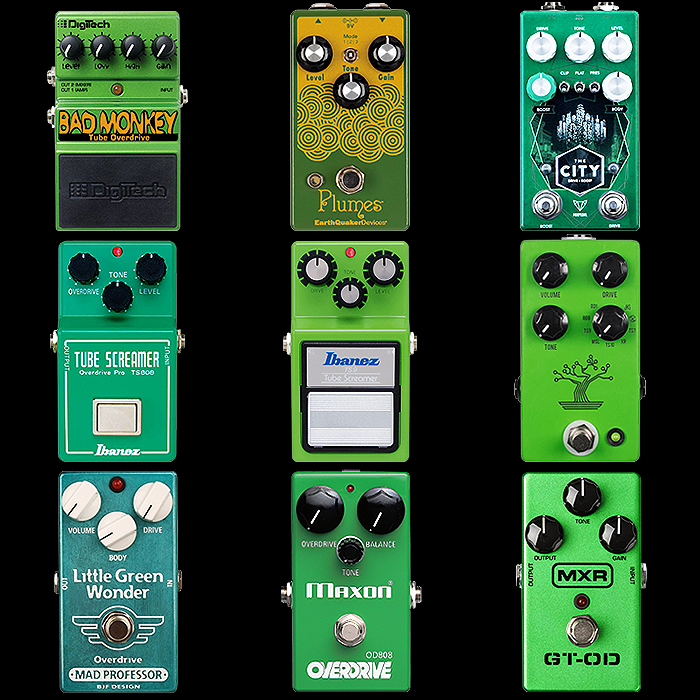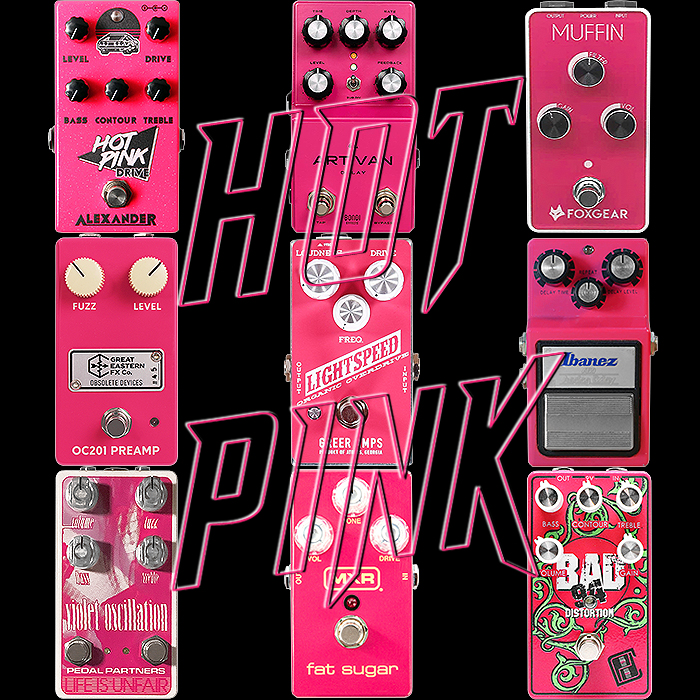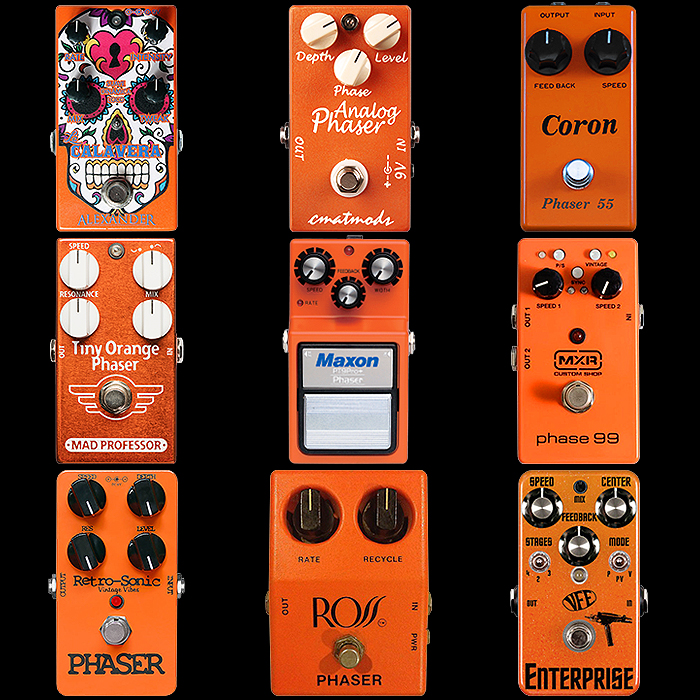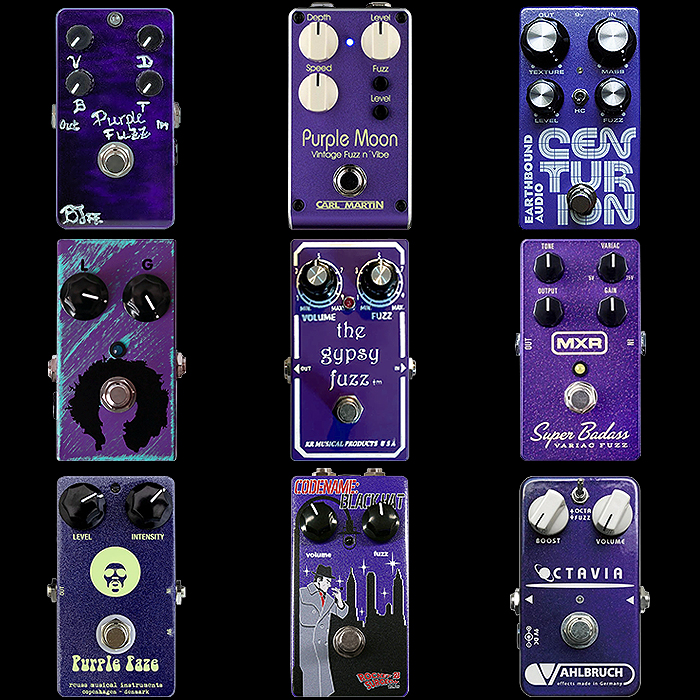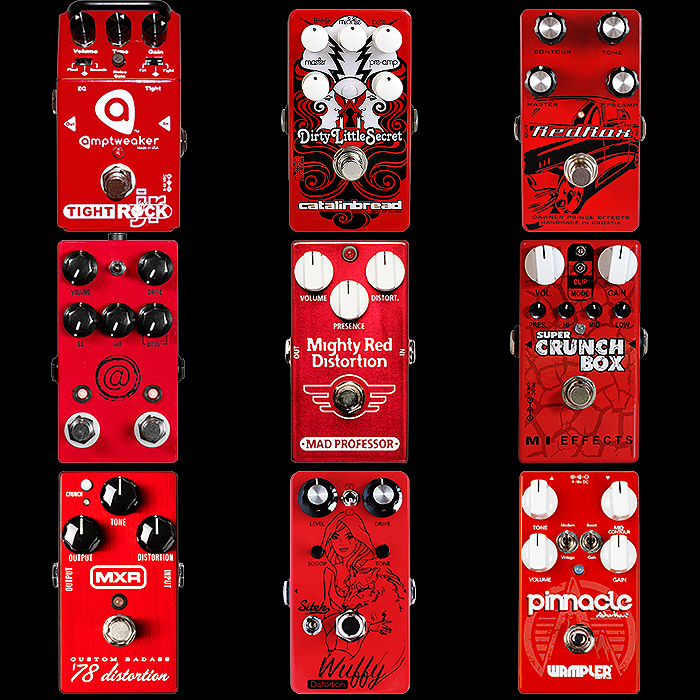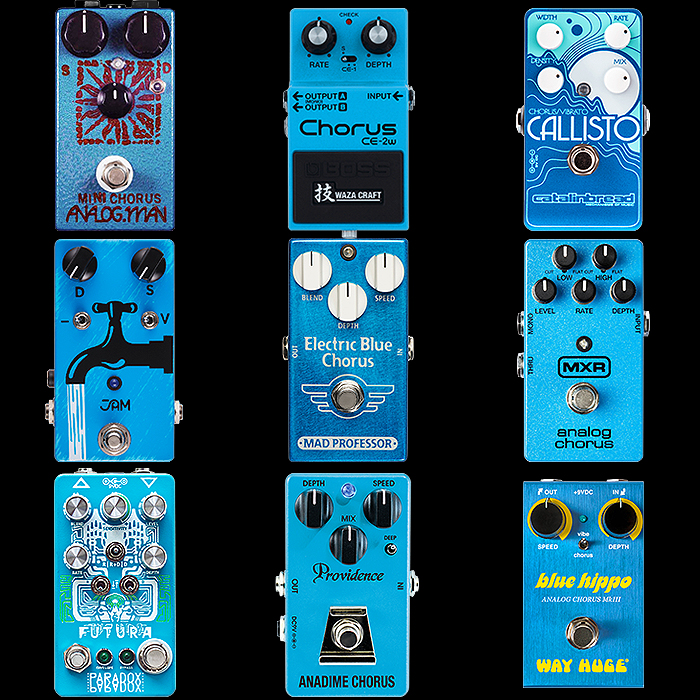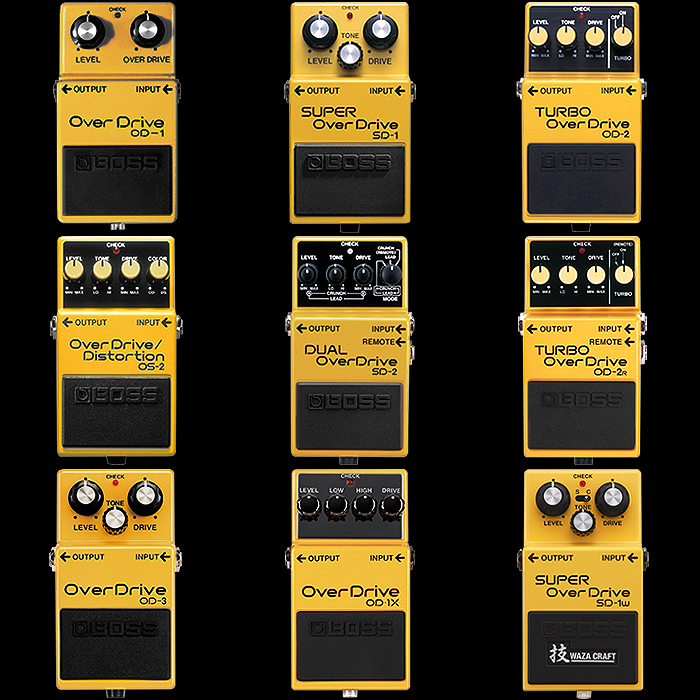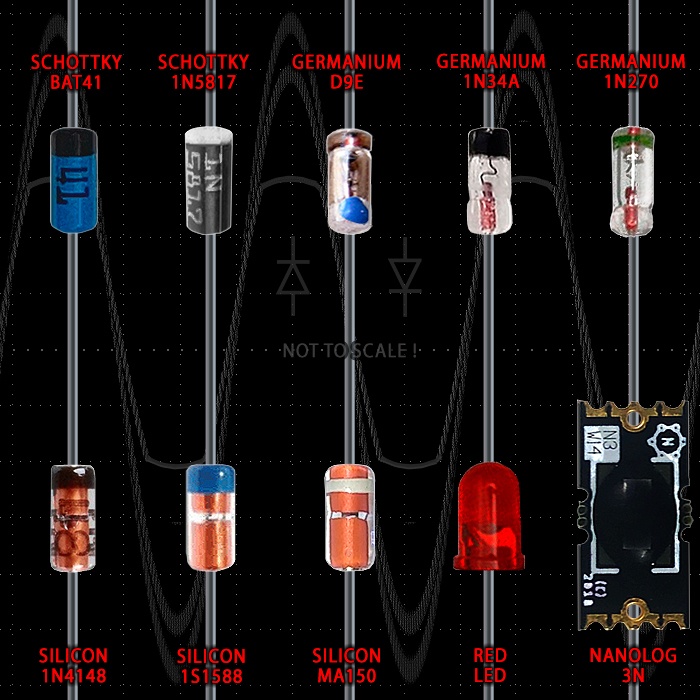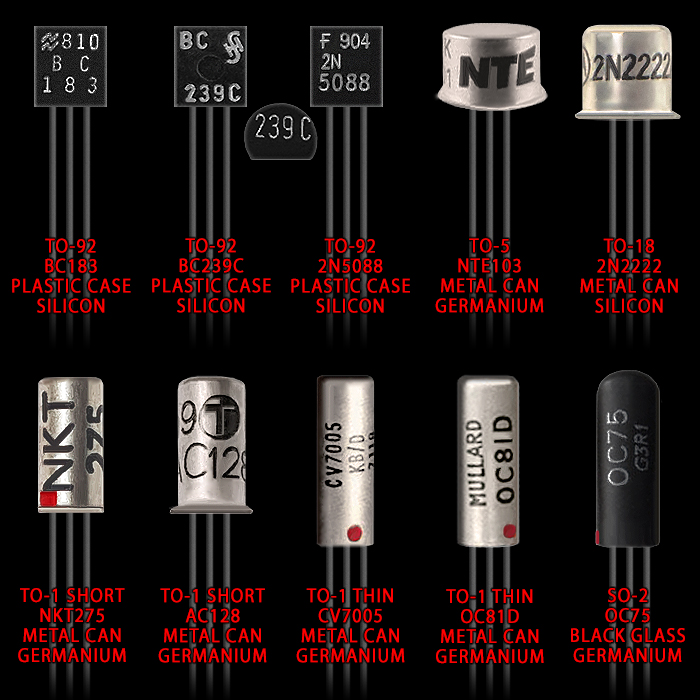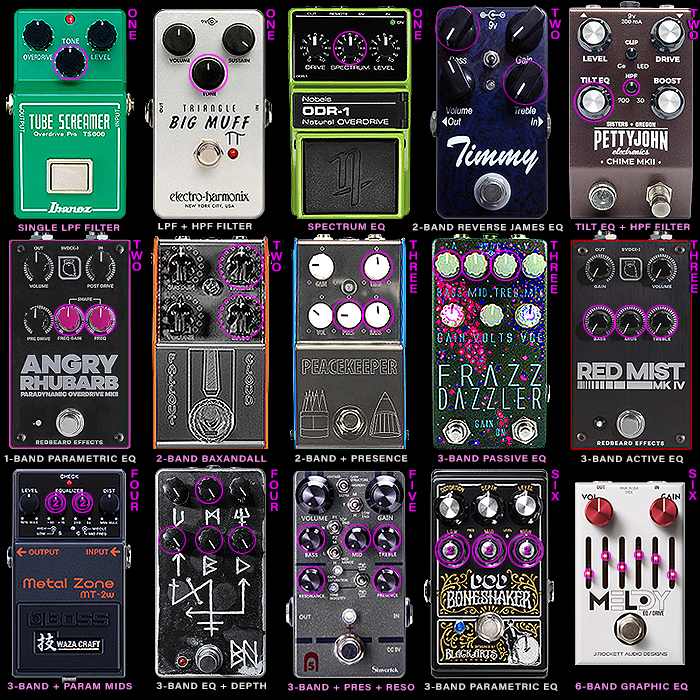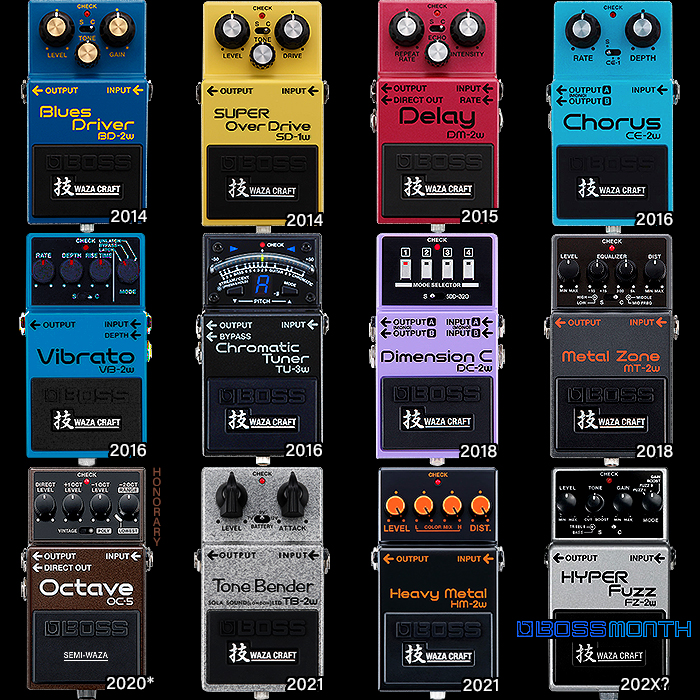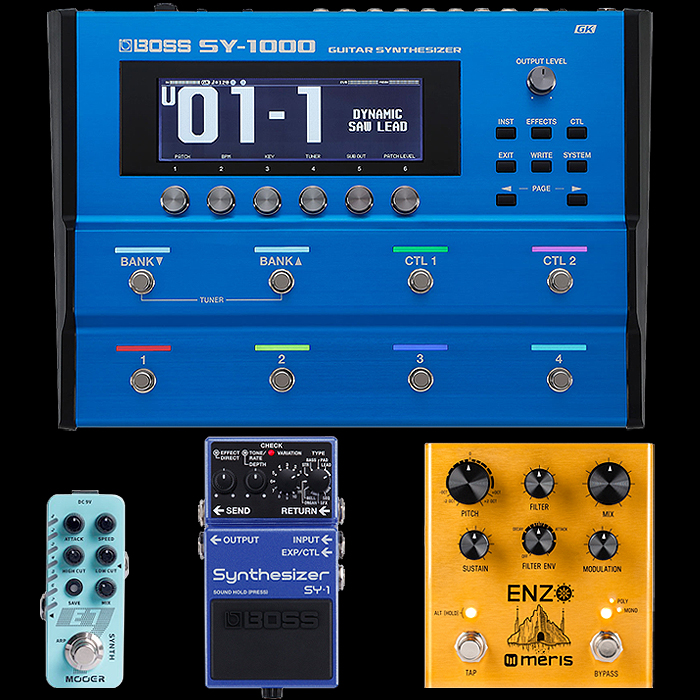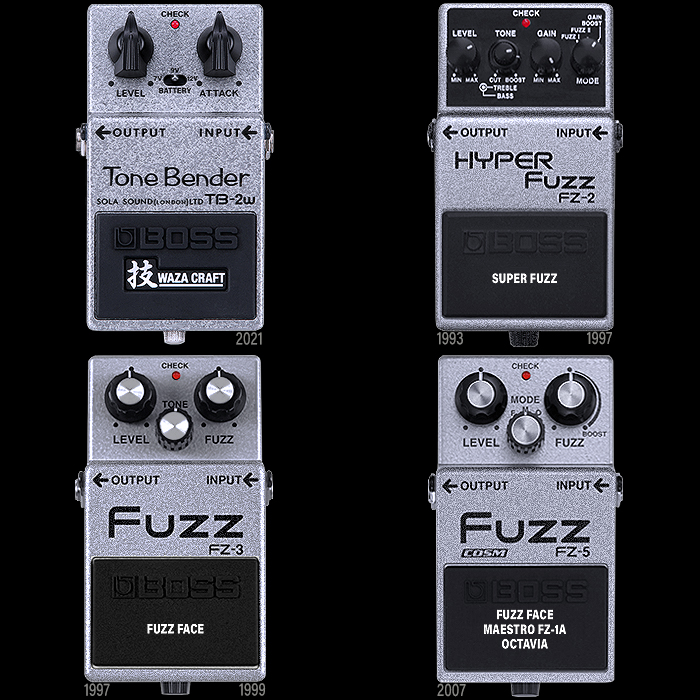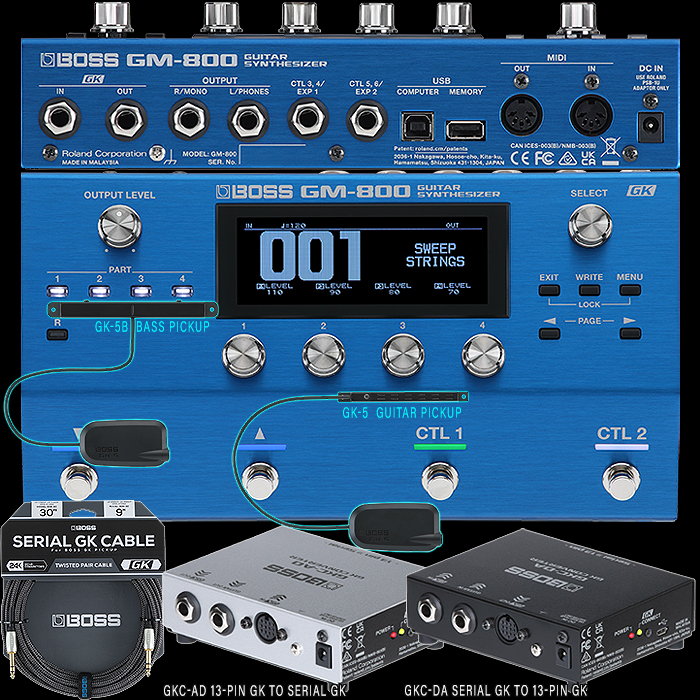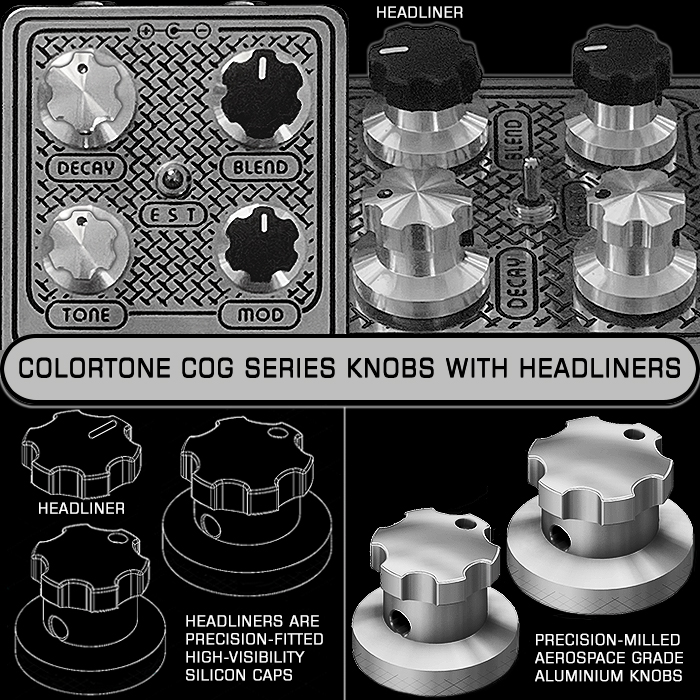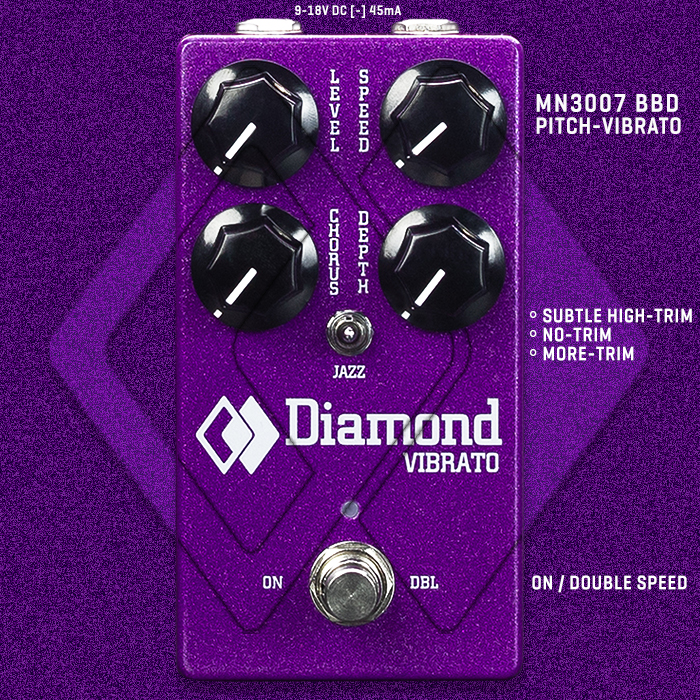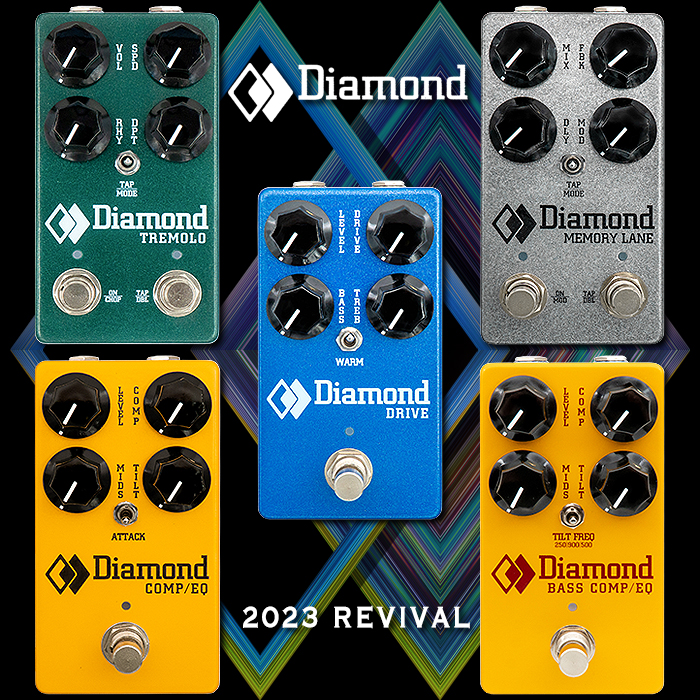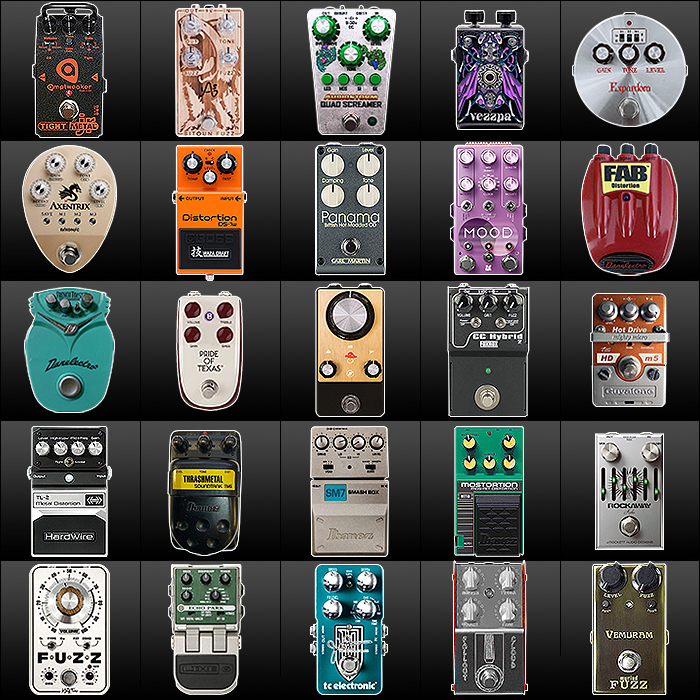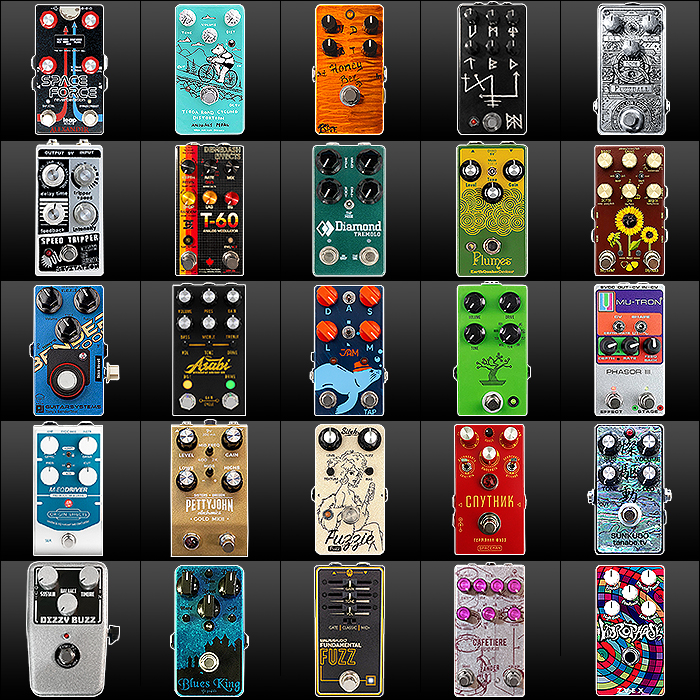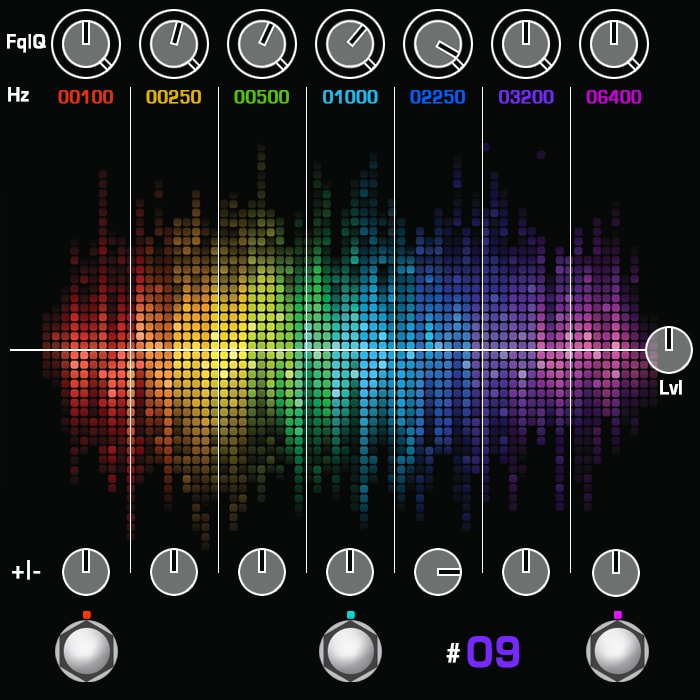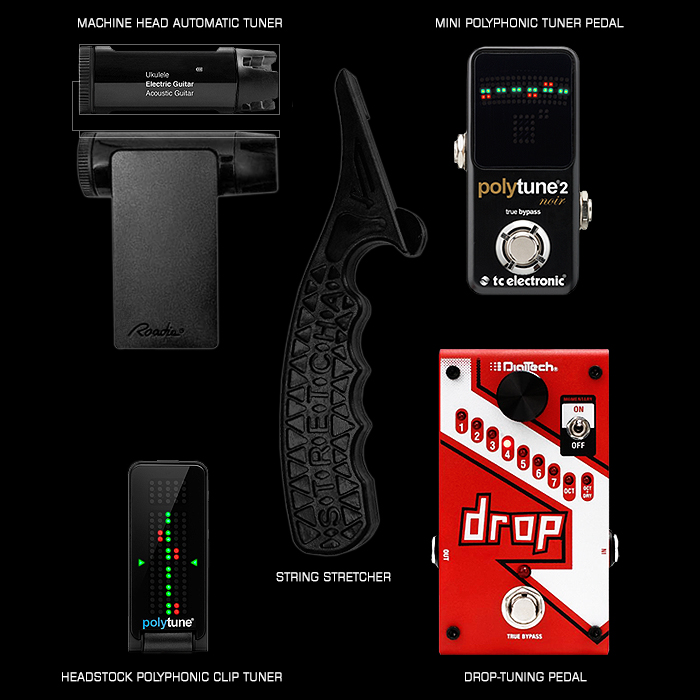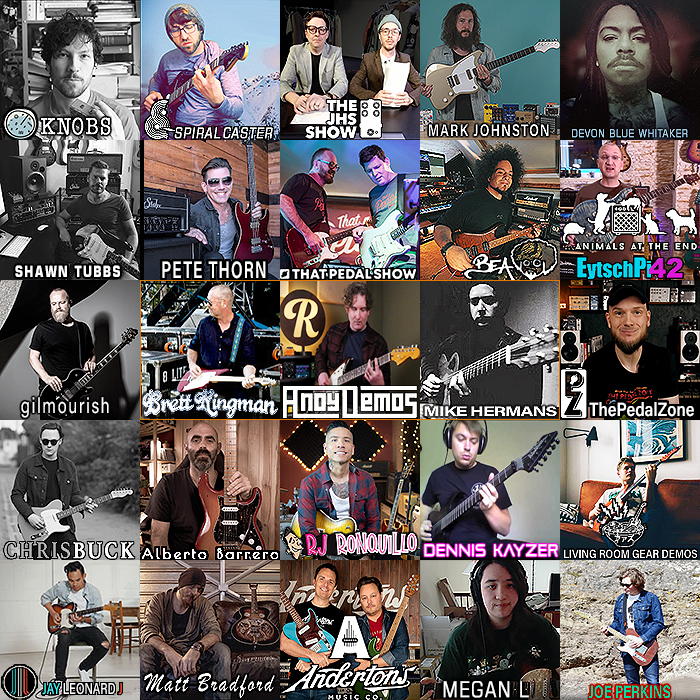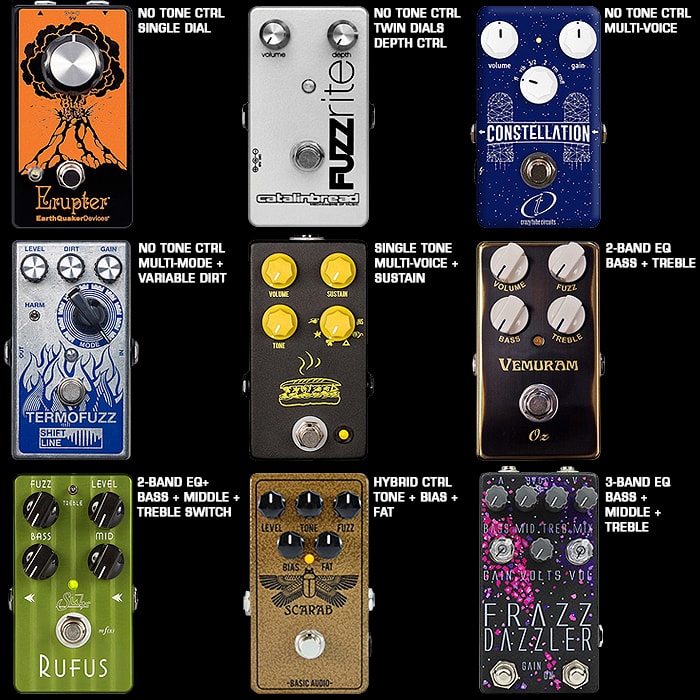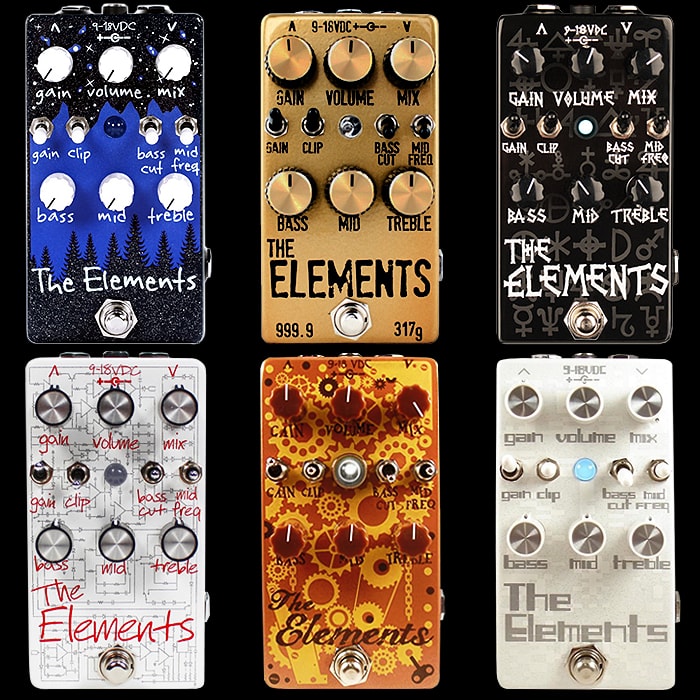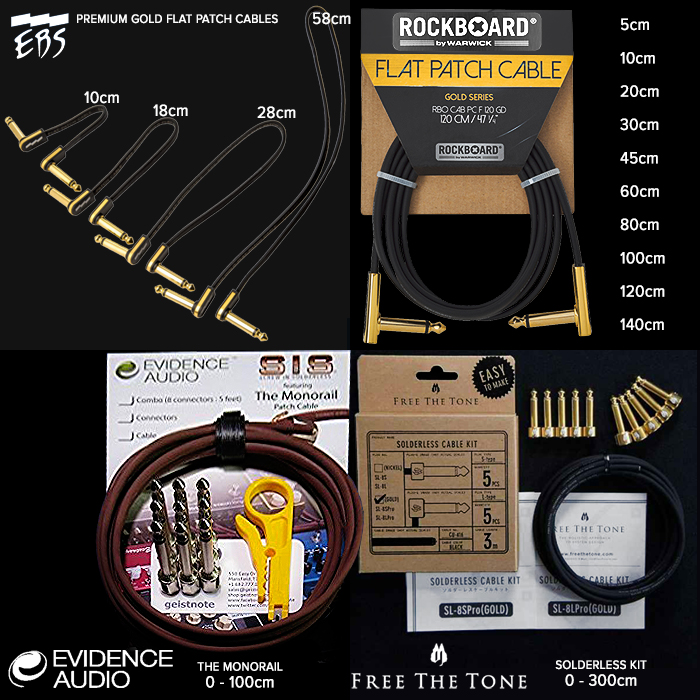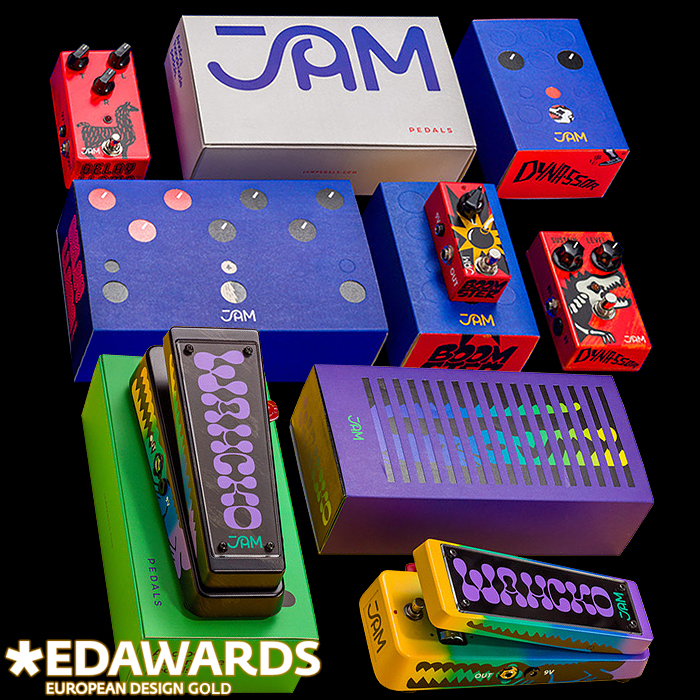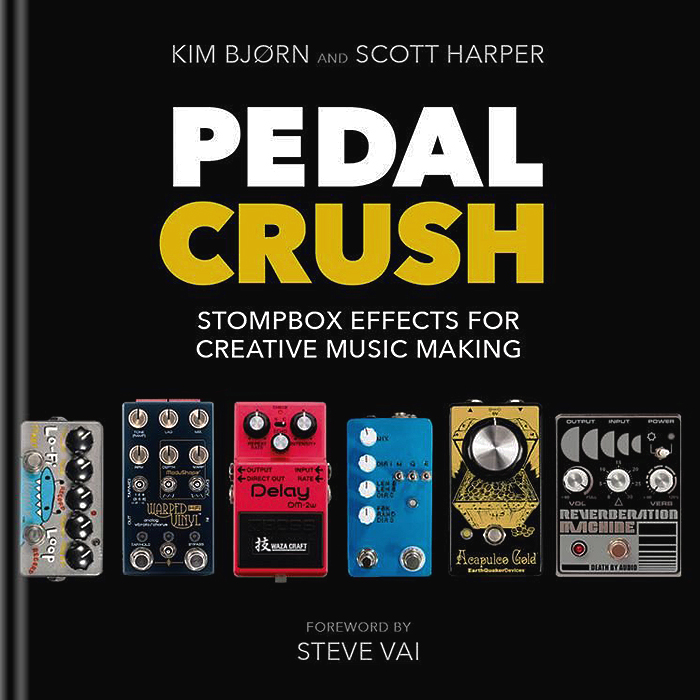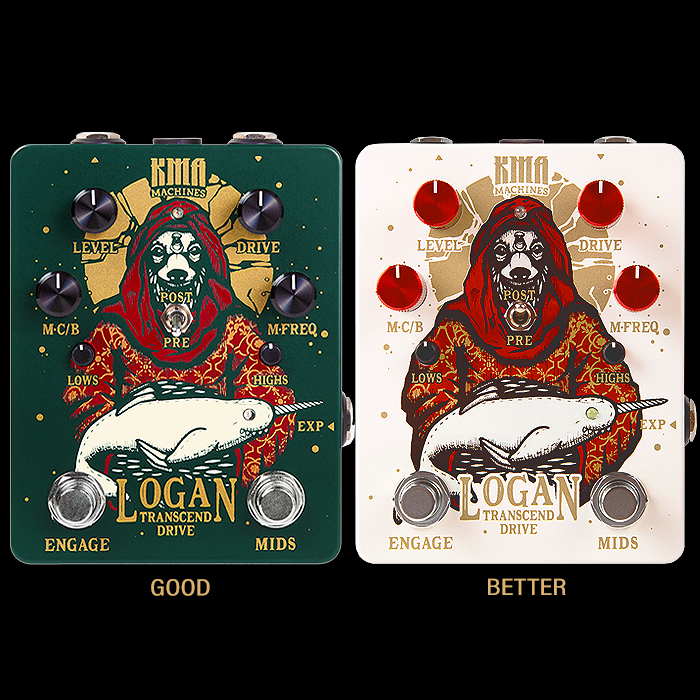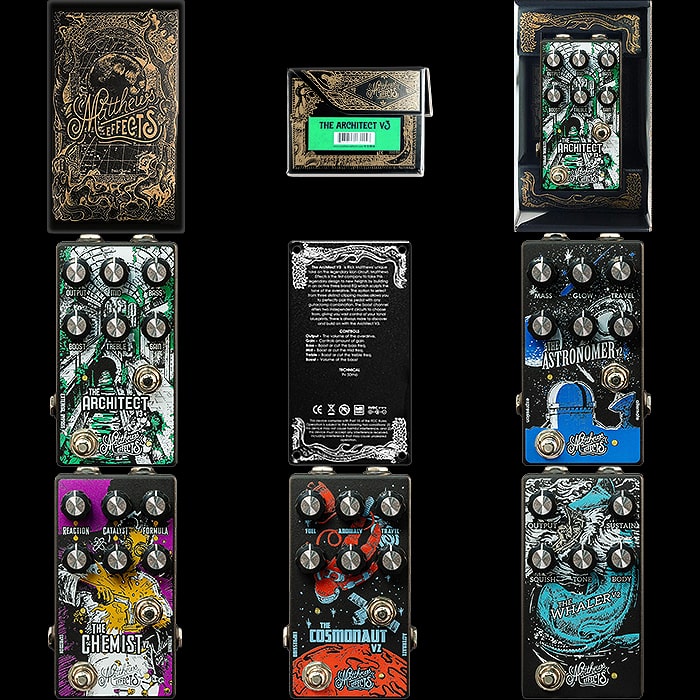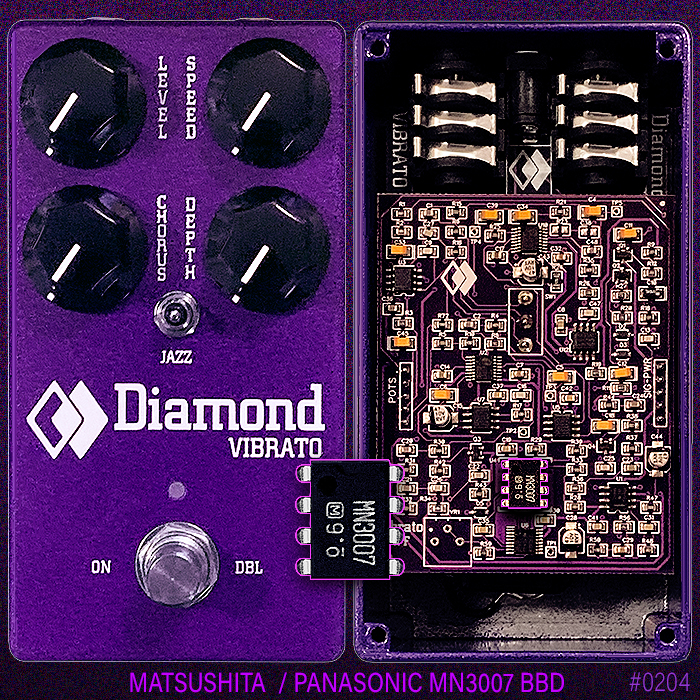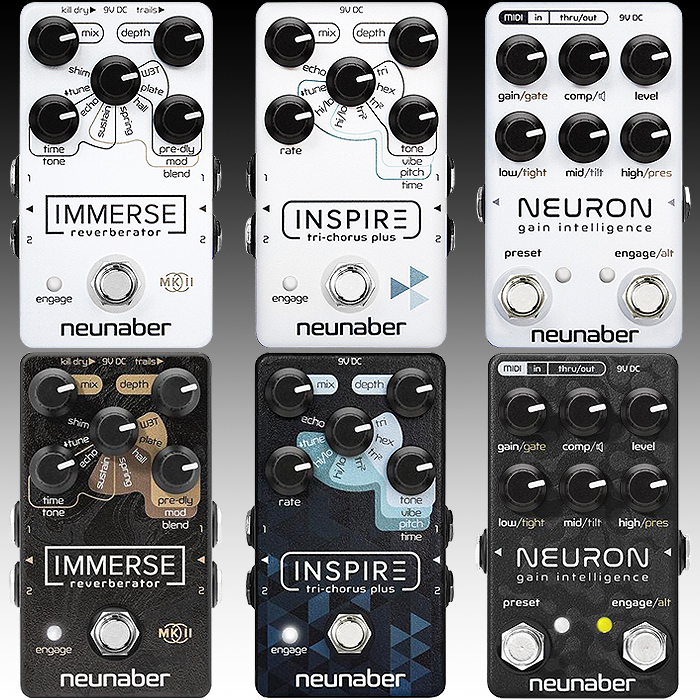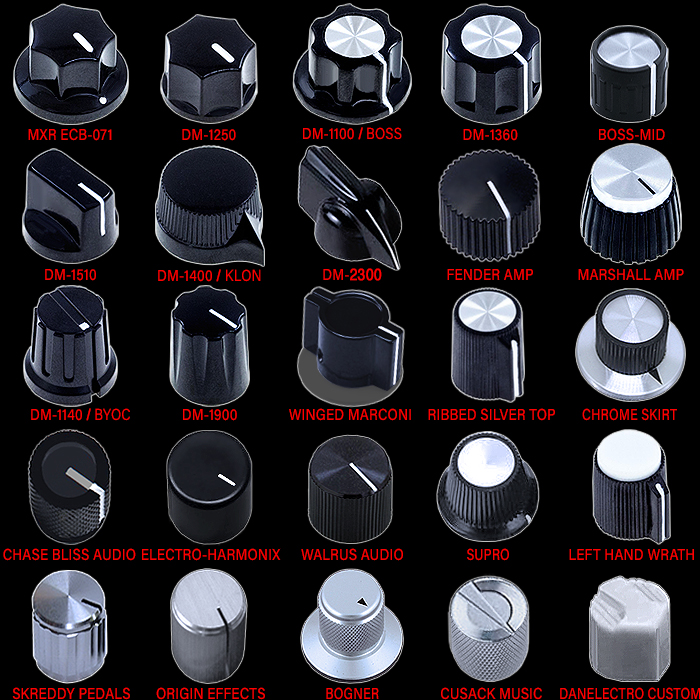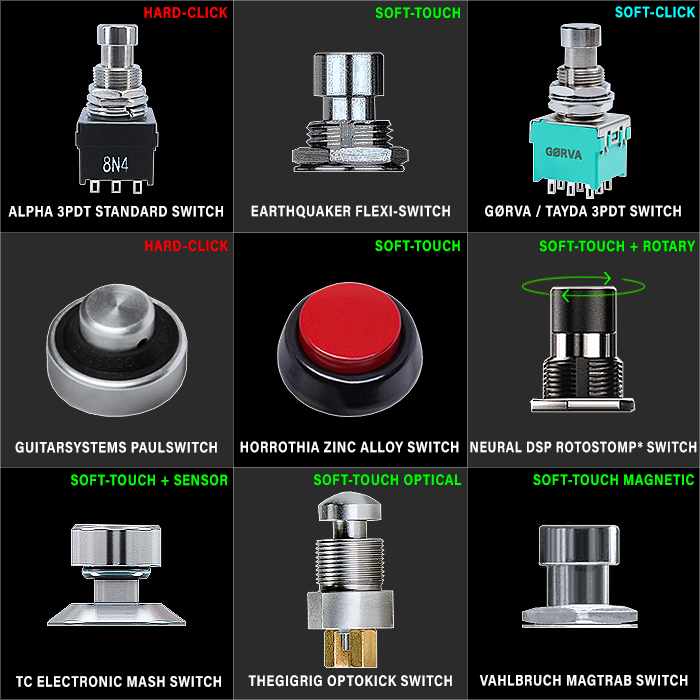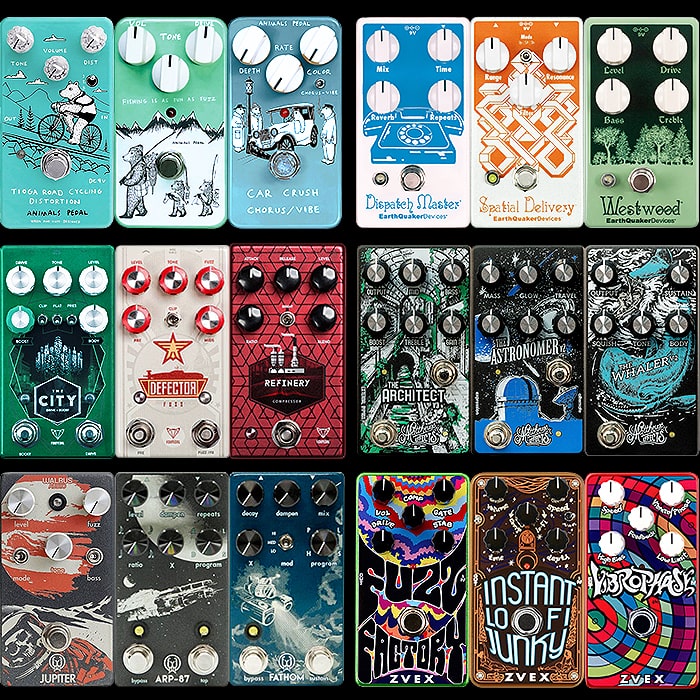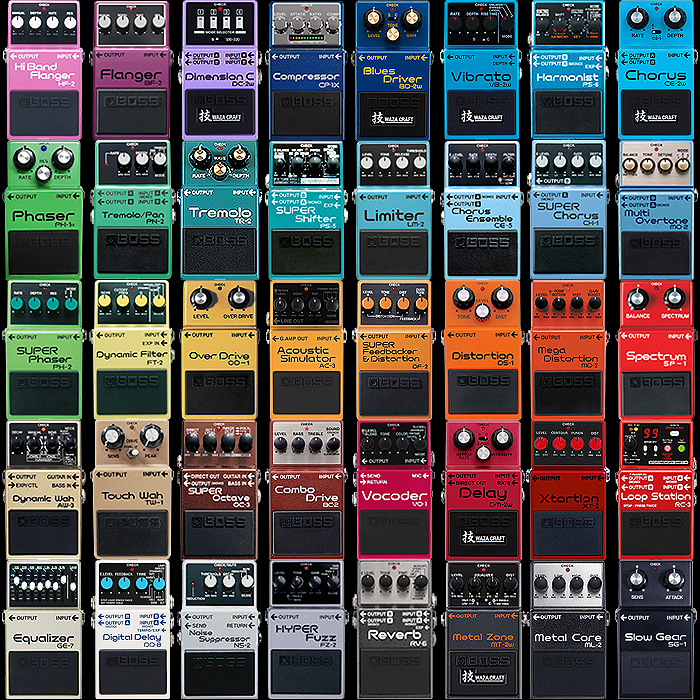Primary / Dominant Associated Pedal Colours
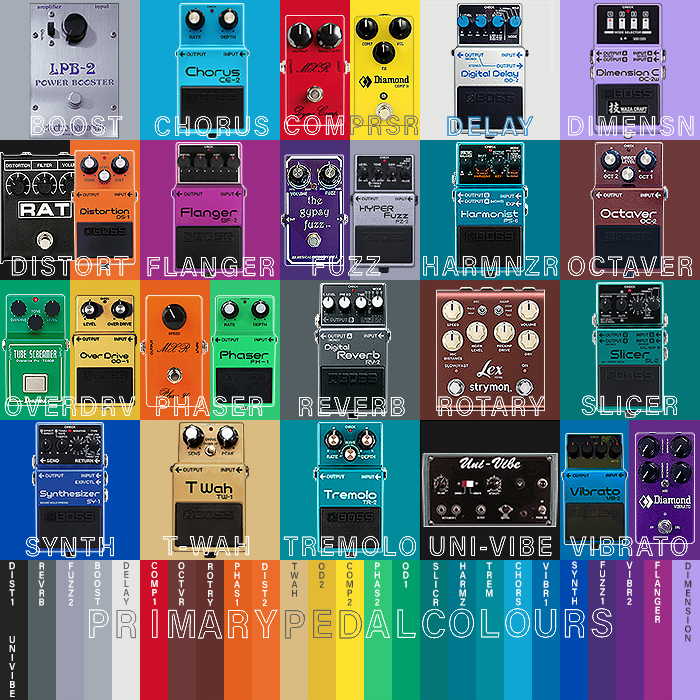
It’s been a while since I did one of these colour roundups - per the below visual - all the way back in 2020 in fact. I’ve done quite a few of these over the years and there’s a whole Section dedicated to ’Colours’ on the ’Highlights’ Tab of this site.
Every time I do this exercise I try to be more thorough and expansive. Last time I identified 12 primaries, while this time around we have no less than 26 pedals across 20 categories - and I hint at several more - which means there are 6 pairings here where we have significant alternative contenders for primary hue representationtive in each of those categories. Last time around time I just stuck to the main ones - while this time around I’ve tried to kitchen sink it!
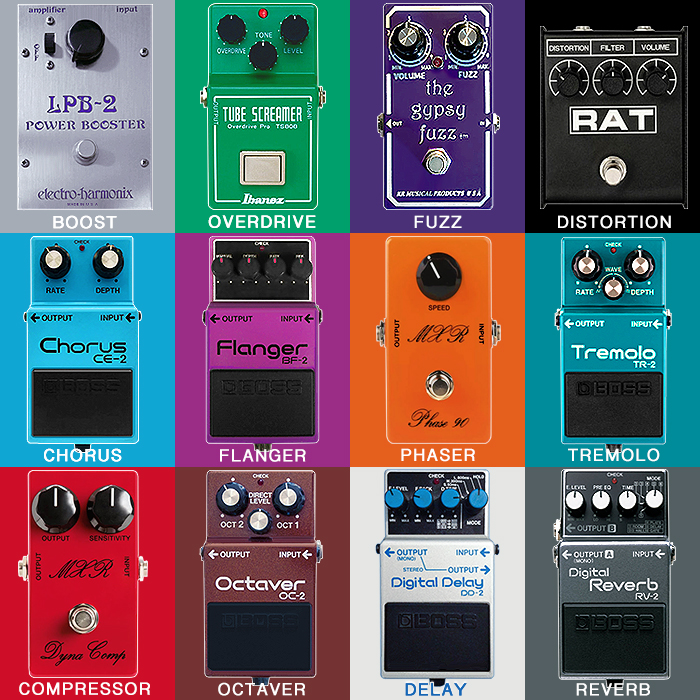
This exercise was in part inspired by my very recently landed Kernom Elipse - where I used specific colours to represent each modulation type - and this pedal colour-chart is precisely at the root of those kinds of decisions decisions.
My other day job is as a brand strategist / CMO - where I particularly enjoy playing around with different forms of symbolism - and colour is very strong symbolically. Just think of all the different colours for mourning around the world - different cultures use Black, White, Red, Purple and Yellow even (Buddhist) - it's far from a monochrome affair!
And so also with products - colour association plays a significant role - a great example can be found with UK crisp packaging colours - where the colour blue is normally used to represent salt & vinegar, green is cheese and onion, and red is typically 'ready-salted'. While Walker's strongly breaks with that convention - shipping its salt & vinegar crisps is 'totally wrong' green packagingg where blue is reserved for cheese and onion - makes no sense to me, and I've long since forgotten of that came about - the blue. green and red associations are generally pretty universally strong in this field!
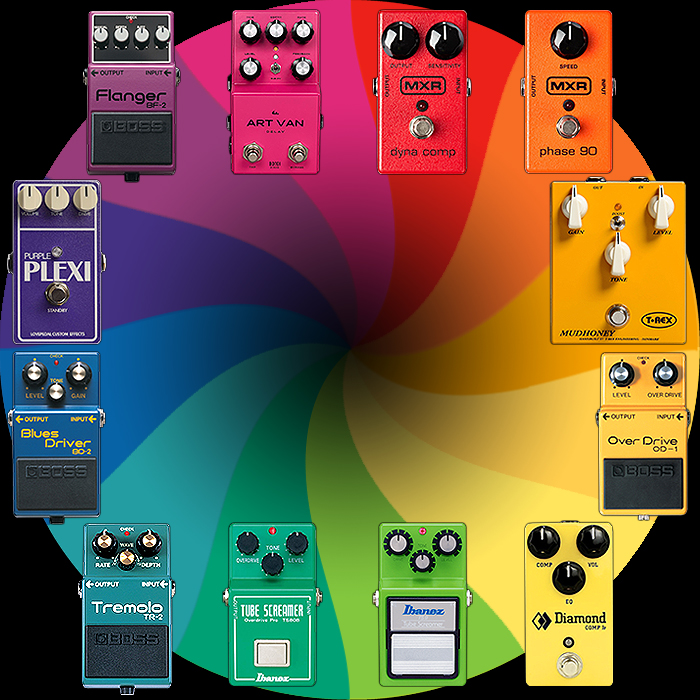
And so to pedals - and the most ubiquitous of those - the 'green one' which represents the whole Overdrive genre - even though it was in essence a 'copy' of Boss's yellow OD-1 - which came out way first. The Tube Screamer quickly becamme the more popular pedal and so instead of Boss's pioneering 'Yellow' series reigning strong - it was the 'Green' that won out!
This exercise looks at all those categories and tries to identify dominant hues for each - it's largely about ubiquity and prominence really, and what pedal is most typically associated with a specific colour - while there are some nuances too of course. Not everything is going to be a shoe-in!

Boost = Silver!
Actually - several of EHX's pedals came in celebrated 'Silver' / Polished enclosures - while I feel it's EHX's legendary 1968 LPB-1 'Linear Power Boost' which best represents this colour hue to date. This is still a legendary boost, while EXH recently reissued that with further Blue accents - not quite as shiny as the original!
Chorus = Sky Blue!
Boss's parent company Roland was responsible for bringing the Chorus to a modern audience - where it had been found in Hammond Organs dating as far back as the 1940's. The first CE-1 Chorus was a grey box, where the Sky Blue colourway was introduced with the CE-2 in 1979. That colour is now pretty ubiquitous - and features on a tonne of different brands' contemporary choruses. Symbolically the colour is wrong - Chorus is more of a watery sound - and should really be represented by a Marine / Sea Blue - where Strymon got it right using the Sky Blue for its Reverb pedals. Really Sky Blue should be for Reverb, and Marine Blue for Chorus - but Boss kind of set the scene back in 1979 - and that's held sway ever since!
Compressor = Red, then Yellow!
If you think of some of the most famous compressor pedals - you would likely end up with 3 on that roster - MXR's original red DynaComp, Diamond Pedals' Yellow Compressor, and Ross's Grey Compressor - based on the DynaComp but with a couple of parts differences - for a brighter output. The DynaComp materialised in the early 1970's - probably 1972/3, the Ross Compressor then came out in 1974-ish, and the Diamond Yellow compressor emerged in 2005 and became a success very quickly. While the Ross enclosure is quite memorable in its shape, I'm not sure that the grey colour is - the win has to go to the DynaComp with the Diamond Compressor taking a slightly further back runner-up spot. Famously Mooer's Mini Compressor is a yellow one - based on the Diamond variety - while the DynaComp red is really the most ubiquitous and memorable here!
Delay = White!
There doesn't seem to be a hard and fast rule for delay pedals - which generally come in a broad selection of different colours, and where today none is particularly prominent. Apart from Boss' line of Digital Delays - which first emerged back in 1983 with the DD-2 - a stark contrast to the earlier red of the DM-2 analog variety. In any case Boss has followed through all these years later - and its digital pedals still remain that same slightly off-white colour - which therefore surely has to be best-known colour of delay pedals!
Dimension / Chorus = Lilac!
A Boss original for sure - coming first out of a Roland rack effect, but then being famously used on a number of celebrated 80's recordings - including Prince's Purple Rain - while the original was undoubtedly served up by Roland's predecessor SDD-320 Dimension D Rack Unit. The original DC-2 unit came out in 1985, the DC-3 in 1988, where Boss then revived the pedal line in 2018 with the excellent DC-2W Waza Craft edition. That Lilac colour is still rarely used outside of this one line, and remains pretty unique to that boss DC Dimension series!
Distortion = Black, then Orange, then Black and Orange!
So the Distortion category is mostly owned by the colours Black and Orange - and dating back to 2 very well known distortion pedals that both emerged around the same time - in 1978. The Boss DS-1, and ProCo Rat Distortions respectively. Boss then further underlines this Black and Orange pattern with its 1983 HM-2 Heavy Metal, and 1991 MT-2 Metal Zone. For Boss those are 3 of its all time best-selling pedals. You really can't get away from the fact - that most Distortion pedals tend to be Black or Orange, or a mix of the two. There are other Distortion colours - as I noted previously - both Gold and Red are associated with Marshall style Distortion pedals - yet overall I still feel the Black and Orange brigade owns the overall category - Marshall gets an honourable mention here at best!
Flanger = Grape!
Arguably there are 2 famous legendary flangers - the EHX Electric Mistress - which was originally silver, but with prominent Bright Green accentts - which became more and more prevalent with subsequent models. While I'm not sure that bright green ever became a primary reference - Green is much more the colour of Overdrives and Boss Phasers than the EHX Mistress. The Boss BF Series followed a similar trajectory to its DM and CE siblings - in that the original ;larger first edition did not represent that category in any meaningful way - that would all change with the arrival of the BF-2 variant in 1980 which wa originally referred to as being 'purple' while in modern parlance it's really a kind of grape colour. Boss kind of owns this colour of effect, while generally Flangers tend to be all over the place in terms of their chosen hues and colours - the BF-2 and successors definitely still stand out and represent!
Fuzz = Should be Purple, but is probably rather Grey overall!
This is kind of a wishful thinking process really - I guess grey is the most ubiquitous of Fuzz colours - we've had Fuzz Faces, Tone Benders, Super-Fuzzes and Big Muffs all in grey enclosures - including Boss's own fabulous series of fuzz pedals. The most obvious colour association should definitely be the Purple (Haze) of Jimi Hendrix - and indeed there are a number of Fuzz pedals in that hue - but the more ubiquitous colour choice is surely Grey!
Harmonizer = Turquoise!
Here we have a fairly unique series of greeny-blue Boss shades - which encompass the PS-6 Harmonist from 2020, the 2008 SL-20 Slicer (SL-2 : 2022), and TR-2 Tremolo (1997) - all of those sit on the intersection of Blue and Green - some slightly more Blue and some more Green - from distance they look similar, but up close and personal they are sufficiently distinct. There isn't really a universal appreciation for any particular hue of Harmonizer pedal - colour-wise those types are pretty much all over the place. While Boss's Dark Metallic Turquoise is a glorious colour that deserves to be celebrated - Boss is definitely the 'Pantone Master' of all Pedal Builders. This shade of PS-6 is not really dominant in any meaningful way - but it deserves to be - in any case it's the only one that comes close enough to be up for consideration!
Octaver = Brown!
I think for sure this is a category Boss owns - you have EHX's Red POG, but Red already has a myriad of other associations - while this shade of woody brown is so iconic and strongly resonant - dating all the way back to the original OC-2 in 1984. The Red of the EXH Pog is really owned by MXR's DynaComp - so the Brown one wins out as the the most recognisable shade for the effect type!
Refresher!

Overdrive = Green, then Yellow!
Everyone is familiar with how Boss delivered the very first popular overdrive pedal - the Asymmetrical-Clipping OD-1 in 1977. Ibanez wanted to copy that formula with its 1979 TS808 tube-screamer - while it was unable to fully replicatee the circuit - as Boss / Roland then owned the patent on Asymmetrical Clipping. As a result Maxon / Ibanez had to make a slightly softer Symmetrical-Clipping sounding variant. Players seemed to have preferred that texture - to the extend that Boss's 1981 SD-1 tried to copy that softer clipping formula - while still using an Asymmetrical Clipping circuit - it just clips quite a bit softer courtesy of further added components. Ibanez and Maxon won big - as now that Green shade is probably the most iconic and ubiquitous of all pedal colours - where you just need to refer to it as that little green pedal - and everyone knows what you mean. That convention still follows through today - and if you see a green pedal - 90 percent of the time it's likely to be a Screamer!
Phaser = Orange, then Green!
Yet another category that Boss has a hand in! For many the Boss PH Green is the primary Phaser reference colour. In fact in the Kernom Elipse manual - the Slow Phase of the Swirl - is illustrated in Boss PH Green. While MXR's Phase 90 has to be the ultimate poster boy for that genre. EHX's silver Small Stone really does not get a look-in on that colour chart - with its fairly neutral Silver Enclosure. It's quite evident that the MXR Phase 90 Orange, and Boss PH Phaser Green are the most resonating Phaser colours - while for me the Orange is way in the lead - as is also born out by just how many Phaser pedals come in that colourway!
Reverb = Dark Grey!
Reverb is an interesting one - where Strymon actually got the formula the most right with its Sky Blue hues of enclosures. While those particular colour tones or ballparks thereof had long since been subsumed by Boss's Choruses. Sky Blue is unmistakably the colour of Chorus - while it really should be the one that represents Reverbs. Boss though has been very consistent with its range of Reverb pedals - which introduced the dark grey hue back in 1987, and where that colour association still stands strong today. Reverb should really have been Sky Blue, and Chorus should have been Marine Blue - which in any case leaves Boss's kind of battleship grey as the mainstay representative for the Reverb genre!
Rotary = Woody / Coppery Brown!
Those original Hammond Leslie Rotary cabinets were imposing woody affairs - as you would expect for cabinetry. The Rotary Speaker simulator has always been associated with those big wooden cabinet boxes - so it makes sense for the pedal equivalents to come in a suitably woody brown hue! Strymon's Lex, Tech21's RotoChoir, Nux's Roctary, and EHX's Lester all carry that hue to a greater or lesses degree. The also Brown hue of Boss's OC-2 tends to be a slightly darker and different brown - with the rotary one having more yellow and coppery tones in the mix. So wood cabinet brown is definitely the core / main representative hue for the Rotary Speaker pedals!
Slicer / Pattern Tremolo = Dark Teal!
Another very unique Boss shade - leaning rather more into the green side of things - but for sure a very striking hue. This is a somewhat odd category really as there aren't that many Slicer / Pattern Tremolo's around - BUT - there are a few - and Subdecay utilises a not altogether dissimilar shade of green for its Tremcoder Pattern Tremolo line. I definitely feel that dark green teal best represents this relatively small and unique category. I really wanted to include my favourite JAM Pedals Harmonious Monk Harmonic Tremolo somewhere in the mix among these selections - while those hues JAM uses for those aren't really sufficiently unique or standout. The artworks are gorgeous as always - but we're seeing fairly typical blues there - which don't stand out against this hue of Slicer pedal, or the Cool Green of Boss's TR-2 Tremolo!
Synth = Mid-Dark Blue!
Boss has been very consistent with its colour grading over the years, and it very successfully releases a significant number of pedals - all within very specific hues and colourway. There really isn't properly a specifically associated Synth Pedal colour - while Boss's Mid-Dark Blue colourway seems the closest to reaching any kind of ubiquity. For sure there is smattering of blue across some different synth pedal brands - but generally it's a mish-mash of different colours. I kind of associated synths with aquatic washes of sounds in a way - and where a deep marine blue kind of works well in representing that genre. It's the only one really that stands any chance of becoming ubiquitously dominant over the following years!
T-Wah / Auto-Wah = Earthy Yellow!
Boss is really good at coming up with unusual hues of colours - as its early T-Wah / Audo-Wah looked pretty distinct. I don't believe there is really a universal colour for Auto-Wah's yet - they tend to be all over the place generally. White there was something really appealing about that organic Earthy Yellow hue that underlines those early Auto-Wah releases - the current Boss Auto-Wah / Filter pedals are more of a Beige / Biscuity / Sandy hue - which I don't feel is quite as distinct or resonant as the original!
Tremolo - Mid Teal / Green!
Surely tremolos are one of the most ubiquitous effects out there - wile colour-wise they are truly all over the place. Tremolos come in a vast array of different hues, while Boss's Greenish Teal has made some significant inroads - and there are a few other tremolos in not dissimilar hues - like Tru-Fi's Ultra Trem. As for some of these other choices - I feel that the Boss TR-2 hue is the most distinct - and most readily identifiable with the Tremolo genre, but far from universal. If any colour is to become the embodiment and representation of the Tremolo Effect - then surely this seems like the colour that would most likely succeed!
Uni-Vibe = Black!
Another Dark Black Hue of classic effect alongside the Distortion Category - which is surely far more ubiquitous and generally associative of that hue! While the 1968 Shin-Ei Uni-Vibe and dozes of others of that ilk are undeniably in black enclosures too. You could also argue that because of the Hendrix connection - there are a fair few Purple variants in the mix too - but generally they are vastly outnumbered by the more typical all-black takes from that genre! I didn't feel that the Purple hue was strongly enough represented to include an alternative here - but it certainly came close - and next time I do this exercise I may well feature a purple variant Uni-Vine too!
Vibrato = Dusky Blue!
I feel that Boss's 1982 VB-2 really set the scene and hue for that effect type in its day - in a similar way that it did with its sibling CE-2 pedal. Both of those pedals still remain very classic and memorable - and several brands use similar hues for their own variants of those genre types. While Boss doesn't have it all its way - as Diamond Pedals got in the mix with its VB-1 Vibrato in 2008 - whose purple hue has become almost as iconic a the Boss original. Boss still probably carries the day - while the Diamond Vibrato leaves a really strong impression too!


